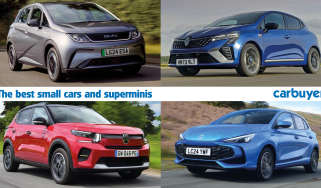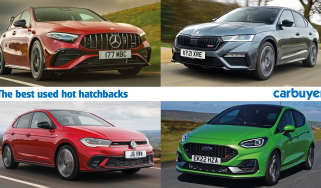Ford Fiesta: which one is right for you?
We compare the latest Fiesta with its predecessor to help you decide
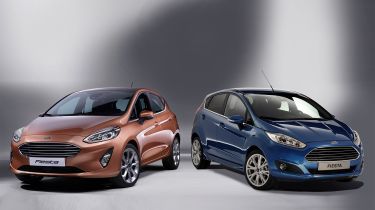
The seventh-generation Ford Fiesta is in showrooms now, and has recieved enthusiastic reviews in the motoring press.
However, it shouldn’t be forgotten that the previous Fiesta – the sixth-generation that ran from 2008 to 2017 – still has a lot going for it. What’s more, a nearly-new or ex-demonstrator example could be a lot cheaper to buy than the very latest version.
While it’s nice to have the most up-to-date model on your drive, it’s worth asking yourself whether it would be better to save the extra cash and buy the previous version of the Fiesta. In this article, we’ll discuss the pros and cons of both versions, highlighting what has changed between the two generations.
You can then decide whether to press ahead and buy the latest version, or save money by choosing a late example of the previous model. And if you decide the latter, we can help with our Ford Fiesta buyer’s guide.
Ford Fiesta Styling
Many onlookers will find it difficult to tell the difference between the latest Fiesta and the previous generation; the only design changes of any significance are at the back of the car. Generally, the latest model has a very strong resemblance to the outgoing version, and this is entirely deliberate.
The sixth-generation Ford Fiesta was an extremely successful car, and it became apparent that this was partly due to the way it looked. As its popularity grew, the mk6 Fiesta became more familiar and recognisable, even without the iconic retro looks of a MINI or Fiat 500. Its visual identity was seen by Ford as valuable enough to retain for the new model.
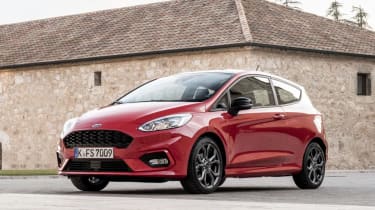
As a result, the head-on view of the latest car has barely changed, or at least it seems that way until you park both generations side-by-side. Most will find mid-range Zetec models of both generations hard to seperate, but the differences become more obvious with the plusher Titanium models. These have a grille that appears almost inverted, to provide what Ford sees as a ‘smiling’ expression that gives the car a welcoming appearance. This is emphasised by vertically mounted daytime running lights inset into apertures either side of the grille.
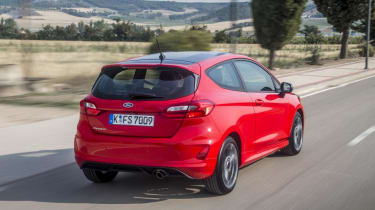
There are far more pronounced differences at the rear of the car, most notably to the rear lights. Here, in a break with a tradition started in 2002, the rear lights are horizontal and run below the rear windscreen, instead of either side of it. Many feel that the previous look was more distinctive, while others see the latest style as more mature and upmarket.
It’s hard to say whether the latest model is better-looking than its predecessor, but it’s certainly less familiar and fresher than the long-lived previous model.
Running costs
The sixth generation Ford Fiesta offered some of the lowest running costs in the supermini class, and the same EcoBoost petrol and 1.5-litre turbocharged diesel engines are offered in the latest model.
The newest version of the Fiesta offers 80mpg or more in official economy from either the 84 or 123bhp diesel, while even the most powerful 138bhp EcoBoost petrol joins the 99 and 123bhp versions with more than 60mpg possible. These represent marginal economy increases over the previous model.
Maintenance and insurance costs will prove very similar between the two generations, too – the entry level seventh-generation Fiesta begins in insurance group 4, largely because the previous group 3-rated entry-level Studio model has been discontinued in favour of the smallest Ford Ka+.
However, bear in mind that every new Ford Fiesta is liable for £140 yearly road tax, while many of the 1.0-litre petrol and 1.5-litre diesel models of the previous version were rated at £30 per year or less – or even entirely tax-exempt – if first registered before 1 April 2017.
Engines and performance
One of the greatest virtues of the previous generation of Ford Fiesta was the way it appealed to drivers. Ford has a knack of making its small cars engaging to drive, with responsive steering, good resistance to body roll, and plenty of grip in corners. Even an entry-level model without larger wheels and tyres is good fun to drive.
In fact, the previous Fiesta is arguably slightly more fun to drive than the latest model, if only because the seventh-generation feels a little more grown up and mature. It still exhibits the same poise and responsiveness as it always did, but has less of the slightly rough-and-ready feel that made the old car feel alive.
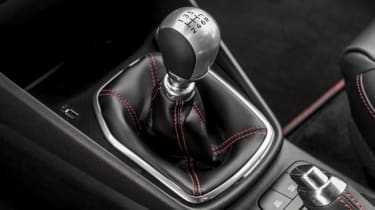
However, whichever version you choose, it’s unlikely that the way it drives will disappoint you. Not only do both versions handle similarly, but they share a range of engines, too. The 1.0-litre EcoBoost petrol engines play a starring role – they offer either 99 and 138bhp and each is a pleasure to drive.
The previous generation also offered a 180bhp Fiesta ST that delighted enthusiastic drivers with its sharp turn of speed and playful nature – it’s unlikely to disappoint if you can’t wait until its successor is introduced.
Interior and technology
It’s safe to say that more has changed inside the Fiesta than anywhere else. The previous version – with its mobile phone-inspired buttons for the infotainment system, and the two individually hooded dashboard instruments – had become rather left behind by the march of progress, so it’s no surprise that Ford took a fresh approach for the latest generation.
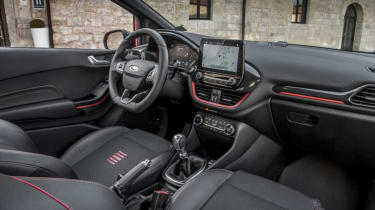
The latest dashboard is far neater, with all models boasting a separately mounted control unit for the infotainment. A range of infotainment specifications is available, starting with a 4.2-inch screen and buttons to control an AM/FM radio and Bluetooth, moving up to a 6.5-inch touchscreen-controlled SYNC 3 infotainment system on Zetec models, which incorporates Apple CarPlay and Android Auto phone compatibility. Titanium models and above get a 10-inch version, with sat-nav added.
Gadgets aside, the seventh-generation Fiesta made a big step forwards when it came to material quality. Although the older model was robustly constructed, the materials used didn’t boast the tactile feel of those in rivals like the Volkswagen Polo or SEAT Ibiza. If that isn’t important to you, the dashboard in the previous-generation of Fiesta still works well, although its style is now showing its age.
Practicality and bootspace
The evolutionary styling of the latest Fiesta disguises one important development, which is that it has gained a little bit of extra length. The reason for extending the Fiesta was to address a common criticism of the previous car – that the rear seats were a little cramped.
The seventh-generation Fiesta gained 16mm of rear knee room, which may be a small amount on paper but makes the rear seats of the latest car feel a lot more spacious than before, particularly on five-door versions. The latest Fiesta is a genuine rival for the Volkswagen Polo and SEAT ibiza for rear seat space – the previous model never quite was.
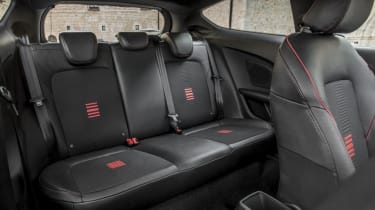
The amount of boot space on offer has only increased by two litres, to 292 litres with the rear seats in place. However, the additional rear seat space also means more luggage capacity when the seats are folded down – the latest car offers 1,093 litres compared to the 974 litres of the previous model.
Verdict
The 2008-2017 Ford Fiesta was an excellent car, never far from the top of its class. Its successor promises to offer the same well-balanced package, but with extra polish to sharpen its appeal.
While we can heartily recommend the latest model to anybody looking for a brand new supermini, if you can live without having the latest styling and updated dashboard – and don’t desperately need more space for rear passengers – opting for the previous model is a safe and budget-friendly choice.
Recommended
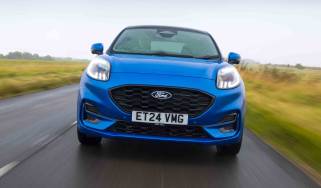
Ford EcoBoost engines: reliability, problems and should you buy one?
Most Popular

Suzuki’s new 10-year warranty is free – here’s how to get it

Omoda E5 targets rivals: now with zero deposit and APR
Tips & advice

Car dashboard warning lights: what does each symbol mean?

Electric car charging stations: public networks, charger types, apps and maps


